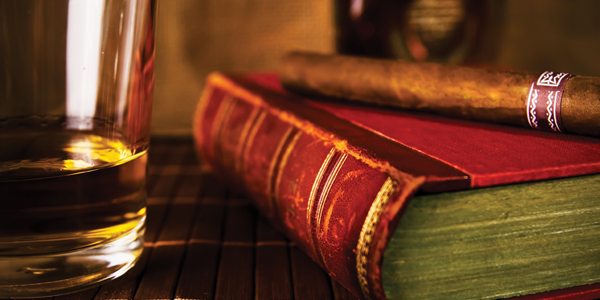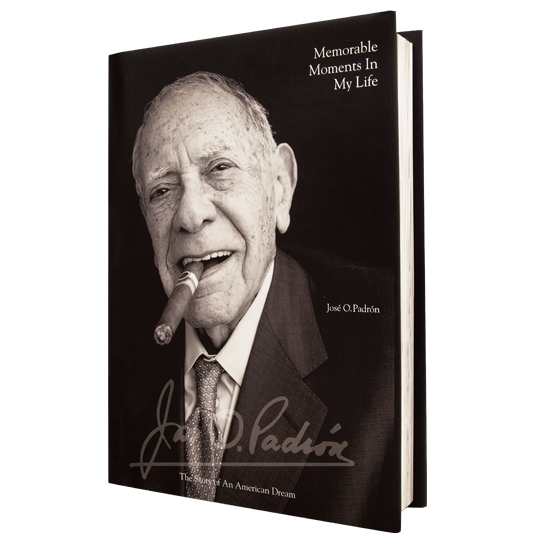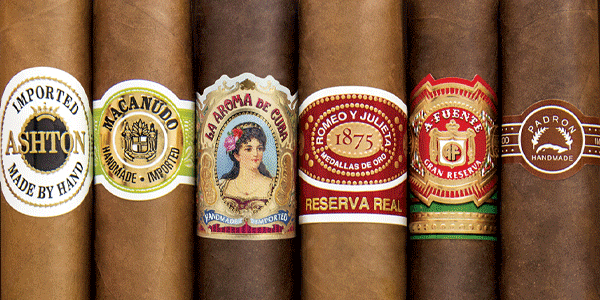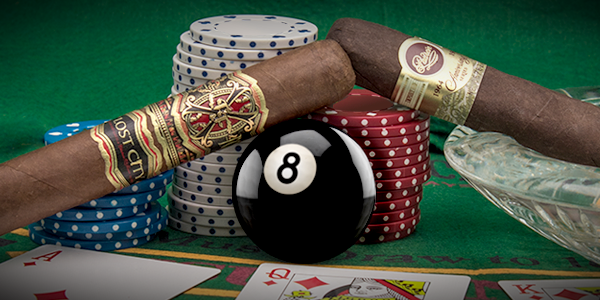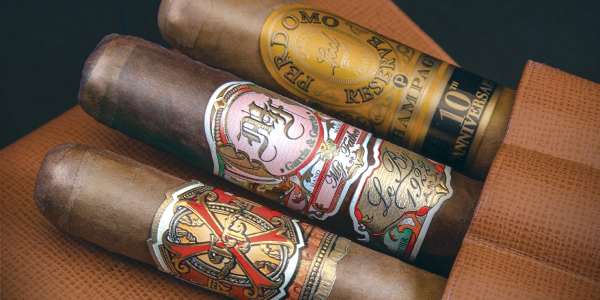Best Books on Cigars
The world is full of books about cigars, most of them guides to the “best,” for the “connoisseur,” and for “idiots” (really). At least one claims to be “complete.” And there’s the problem. No published book, because of the time it takes to research, write, and print can possibly be complete given the speed at which the cigar industry is producing new cigars or old cigars with new blends, or old blends with new wrappers, or old and new blends in new sizes. (I think I’ve confused myself.)
In fact, today’s best sources for information about the cigars themselves are found online. I mean, you’re using one of those as you read this. So, instead of recommending the three “best” cigar books that are the usual type of guides, allow me to offer a mix of educational, enlightening, and entertaining reading about our wonderful world of cigars.
The Ultimate Cigar Book
by Richard Carleton Hacker
Skyhorse Publishing, 2015
379 pages, $15 or so online
Okay, this is the one guide that I’m including, but even the author, in the introduction, acknowledges, “Of course, no book such as this can ever be completely up-to-date. New brands are emerging almost daily while others are fading away. Blends change, trends change, world situations change, and as a result, the cigar industry continuously evolves. So one can never presume to capture or know it all.” (All that and still the book’s title claims to be the “ultimate.”)
Richard Carleton Hacker is right of course, but his book is still valuable, especially to a relatively new cigar smoker who is interested in the history of cigars, how cigar tobacco is grown, how a cigar is made, and how to choose a cigar. Hacker has chapters on “The Ritual of Lighting,” “The Etiquette of Smoking,” and on “The Secrets of Cigar Storage.” These are especially useful for a new smoker.
“One of the cardinal rules of cigar smoking is to always allow enough time to fully enjoy your cigar of choice,” Hacker writes in chapter four. Obvious, no? But you know how many times your time ends before your cigar does. Or vice versa! The implication here is that you should try to stock your humidor with cigars of different sizes to accommodate different occasions and the time to enjoy them.
This chapter goes into the different types of cuts to the head of a cigar and their virtues and flaws. Hacker concludes, “Still, for overall practicality, my recommendation is to go with the guillotine (straight cut). After all, what was good enough for Marie Antoinette should be good enough for our cigars.” What? Not funny? You don’t know who Marie Antoinette was? Well, then you’ll go find out and learn some more. Hacker also talks about how to light cigars, advising, “But whatever method of fire you select, don’t plunge your cigar directly into the flame as if it were a branding iron.”
In the chapter on cigar storage, Hacker speaks to the wisdom of having more than one humidor. One will be for cigars ready to smoke, the others for aging cigars.
“I mark each box I am aging with the day, month, and year that I first put it down,” Hacker shares. “Before closing the box, I smoke one of the cigars, and note my impression of the aroma of the wrapper and the taste of the tobacco.” What he does next is on page 202. It’s a real cliffhanger! Just kidding. The book is worth reading up to page 257 for a transfer of knowledge from a veteran cigar lover who is as passionate as anyone smoking today.
Oh, what happens after page 257? Well, that’s where the chapter, “International Compendium of Cigar Brands,” begins and falls victim to the earlier admonition about it being impossible to be up-to-date. In fact, there are some curious omissions in this section, like La Flor Dominicana, that are hard to understand. Pick up again on page 366 for a useful dictionary of cigar terms. You’ll likely find other small issues with the book, but it’s probably the best of the guides.
Holy Smoke
By Guillermo Cabrera Infante
The Overlook Press, 1997
329 pages, $5.99 online
Guillermo Cabrera Infante was born in Cuba. He was a novelist, essayist, translator, screenwriter, and critic. At one time, Cabrera Infante was a supporter and confederate, serving as a cultural attaché in Belgium, of Fidel Castro. Later, in 1965, after returning to Cuba for his mother’s funeral, the writer became disenchanted with the regime and went into exile in London. Cabrera Infante’s most famous book, Tres Tristes Tigres (Three Sad Tigers) works well in Spanish as a tongue-twisting, experimental novel that has been compared to James Joyce’s Ulysses.
For our purposes, Cabrera Infante is the author of a book about cigars and smoking that is at once maddening and enthralling. Holy Smoke delights with its invaluable collection of cigar-related references to movies, literature, and popular culture. This is a book – really stream of consciousness on the pages – that could greatly benefit from a table of contents and an index. You will love this book, or you will be supremely frustrated. I urge you to stick with it. You will find gems. Great quotations and puns. So many puns. The book also quaintly refers to Davidoff as “the most expensive cigar in the world…around ten dollars each.”
Cabrera Infante starts at the beginning and muses on the discovery of cigars by Columbus’ crew, then moves gently to the manufacture and different forms of cigars. The book really gets going when you get to the references to performers like W.C. Fields to Edward G. Robinson to Groucho Marx, among others. Groucho is something of a hero to Cabrera Infante.
Cabrera Infante observes that Groucho Marx, in the movie Duck Soup, “as in every picture by the Marx Bros, all Groucho truly loves is his cigar. At least he is kissing his vitola all the time, even when he is sleeping or slapping his adamant rival.”
Cabrera Infante quotes the movie Horsefeathers to convey the comedian’s irreverence.
“What are you doing with that cigar in your mouth?” Groucho is asked.
“Why, do you know another way to smoke it?” he responds.
“If Groucho didn’t have a Punch in his mouth he had a pun,” the author writes, approvingly.
Cabrera Infante riffs on the movie The Natural, in which “the villains smoke cigars, so do the heroes; all the baseball players smoke cigars as big as their bats. All except Robert Redford, that is.” The author reminds us of the scene in Citizen Kane when Joseph Cotton’s aged character nags the reporter to bring him a couple of cigars. There are so many more recollections.
Cabrera Infante is perhaps most interesting when discussing Cuba and Fidel Castro. “I was once with Castro on an impromptu visit to a cattle ranch on an island off the eastern coast of Cuba,” Cabrera Infante writes. “When night fell I watched a Western on television. Castro came into the room to watch the show and immediately he asked: ‘Who has a cigar?’ I had four Havanas (Por Larrañaga) in my shirt pocket, very visible in the moonlight of the prairie. So I said I had. I had to. I also had to give him a cigar.”
They watched the movie a bit, “Castro asked for a second cigar. Then for a third.” At the end of the movie, “Castro stood up, all uniformed and pistoled six feet of him, and commented: ‘Too many songs and not enough Indians.’ We all agreed. Our Prime Minister was our first film critic too. He was also the sole talker, as usual.” Before retiring for the evening, Castro “turned to me and said: ‘I see we have one Indian left.’ He was pointing at my pocket and not at my head: he meant my last cigar. ‘Do you mind if I borrow it?’” It was Cabrera Infante’s last Lancero. Castro never paid him back.
The Ultimate Havana
By John Lantigua
Signet, 2001
312 pages, $6.50 or less
If Holy Smoke is a challenge to read, The Ultimate Havana is a cool breeze of a book. (Wait a minute! Two books with “ultimate” in their titles?) The novel is set in Miami and the Dominican Republic. It’s essentially a crime thriller involving Cuban tradition, counterfeit cigars, mobsters and a lot of misdirection. This is the book you take to the beach with you and light up the biggest cigar you have. It’s cigar noir at its best.
Willie Cuesta is a former cop turned private detective. Willie likes to go to the clubs late at night. The story takes you into Miami’s steamy nightlife through Willie’s eyes. Trouble begins when Willie is hired to find the son of a wealthy (or not so wealthy?) exiled Cuban cigar family. When Willie starts to ask the right questions about the wrong people, things get scary. And a little steamy.
“She was a tall, green-eyed, auburn-haired woman in a very short, black skirt and tight red jacket,” Lantigua writes about what’s happening to Willie in a cigar lounge. “She didn’t appear to have much on underneath it, just her own generous self…Her name was Dana and she stood right over him.”
“‘Can I help you?’
Willie stood up. ‘Just browsing.’
‘Maybe I can interest you in a private drawer [in the humidor].’ Her voice was low and breathy, like a smoky exhale.
‘I’m not sure at the moment,’ Willie responds, ‘How much does one cost?’
‘Five hundred dollars per year, but with that you get a discount on our best cigars. And you get my personalized attention.’”
Yeah, we’ve all heard that before.
Lots of cigars get smoked in this book. And there’s a lot of fighting about who’s got the best cigar, the ultimate Havana. Lantigua even includes scenes reminiscent of iconic events like Cigar Aficionado’s Big Smoke. Willie is the main character in a mystery series of four books. The Ultimate Havana is number two.
Lantigua lives in Miami and is a veteran award-winning journalist who covered Latin America for years. He also clearly studied the cigar industry, thanking Cigar Aficionado’s former executive editor Gordon Mott; Davidoff’s Hendrick Kellner and “all the folks at El Credito Cigars in Little Havana,” among others.
Memorable Moments in My Life
Jose O. Padron
Piloto Cigars, 2017
316 Pages, $60.00
For an intimate look at the life of legendary cigar-maker Jose O. Padron, Memorable Moments in My Life traces Padron’s journey from his upbringing in pre-Castro Cuba to the peak of premium cigar-making in the modern U.S. market. Padron built and rebuilt his brand with the enduring support of his family in the face of political and economic circumstances few could confront and overcome. Persistence, hard work, and natural talent as a premium cigar-maker defined the reputation and life of Jose Padron and one of today’s most prestigious brands.

